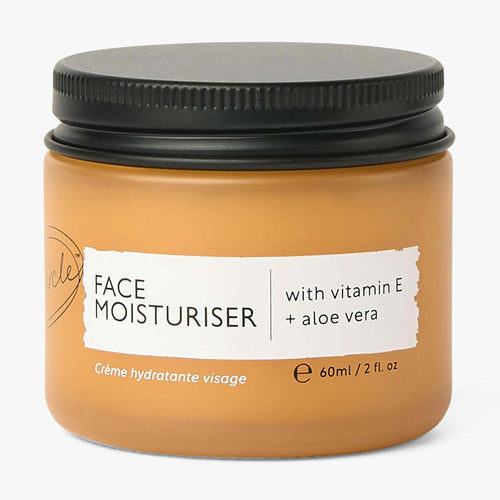Skin pilling may be a mystery to you, but if you’ve experienced it – you’ll be keen to find a solution. Smooth skin awaits with our top tips on how to prevent skin pilling, but first, we need to understand what it actually is.
What is skin pilling?
Skin pilling is a term used to describe when products such as moisturisers and serums clump on the skin in small flakes or balls. You may be familiar with the term pilling from the world of fashion, in relation to the pilling of fabric – where tiny balls of fibre form on clothes.
Preventing skin pilling
In order to prevent skin pilling, it’s important to consider both the products you are using on your skin, and how you are using them.
1. Know your skin type
Dry, acne-prone, sensitive, mature, and dull skin – these are just some of the skin types you may find yourself with. While your skin type isn’t something to get hung up on, it can help to inform what kind of products to use, and what kind of ingredients to look out for.
Dry skin
Dry skin is a common skin complaint that is typically characterised by a lack of moisture in the outermost layer of the skin, the epidermis. With dry skin, your skin can feel tight, rough, or flaky. In more severe cases, skin may crack, itch, or develop red patches.
Focusing on increasing both hydration and moisture in the skin is important for those with dry skin. Using gentle cleansers and products with ingredients such as ceramides, glycerin and hyaluronic acid can support dry skin.
Acne-prone skin
Oily and acne-prone skin is skin that is likely to develop blackheads, whiteheads, or cysts. Acne is not a one-size-fits-all descriptor, with some forms of acne being caused by excess oil, some being caused by hormonal changes, and among others, some being caused by environmental factors such as pollution.
Those with acne-prone skin can benefit from using products that reduce sebum (oil) production, such as salicylic acid, niacinamide, and hyaluronic acid.
Sensitive skin
Skin that is highly reactive to external stimuli can be classed as sensitive. Those with sensitive skin often experience discomfort such as redness, itching, burning, or dryness when exposed to certain irritants.
For people with sensitive skin, prioritising natural, vegan formulas is important, ensuring the products are filled with skin-loving ingredients like cocoa butter, oat powder, and aloe vera.
Mature skin
We’ve said it before and we’ll say it again: to age is a privilege. Signs of ageing are not bad, and they don’t need to be removed – however, some people find that targeting issues such as fine lines or skin texture makes them feel more confident.
With mature skin, it’s important to focus on protecting the skin barrier, as well as stimulating collagen production.
Dull skin
Dull skin often looks lifeless and can lack radiance. Tired-looking skin no matter the amount of sleep you get, dull skin can be caused by a lack of hydration, environmental damage or sun damage.
To give your skin some more radiance, focus on boosting your hydration levels, using antioxidant ingredients and gently exfoliating the skin.
2. Stick to gentle exfoliation
It can be tempting to exfoliate, exfoliate, and exfoliate some more when you experience skin pilling, in the hopes of removing anything that could pill on the skin. However, it’s important to use gentle exfoliators, and only exfoliate with a physical exfoliant up to two to three times per week.
Our Natural Citrus Face Scrub is formulated for dry and dehydrated skin, giving it a hit of hydration while buffing away any dry, dead skin cells. It is formulated with orange oil which acts as both an antiseptic and anti-inflammatory, helping to treat acne and spots for a clear complexion.
3. Apply products in the right order
Oftentimes, skin pilling is caused by applying your skincare products in the incorrect order. It’s best to layer the lightest products on your skin first – typically water-based products – and then go in with heavier creams and oils.
Here is the recommended order to apply our UpCircle range.

4. Apply products in thin layers
You don’t need to use a huge amount of product to get the benefits. Applying too much product can make the products that are used next sit awkwardly on the skin, and pill.
Instead, take care to apply your products in thin layers on your skin.
5. Let products sink in
It's important to ensure that you let the formula sink into your skin in between layers of product. If the product you’ve just used is still sitting on your skin, the next product you add on top is likely to cause skin pilling.
6. Avoid rubbing products into the skin
Harshly rubbing products into your skin can also be a cause of skin pilling. Instead of rubbing products into your skin, try patting them gently onto your skin.
Layering without pilling
Our Elasticity Boosting Duo contains our Peptide Serum and Face Moisturiser. Here’s how to layer them to get the most out of the skin-loving ingredients they’re formulated with, and to avoid skin pilling.
After cleansing and toning your skin, apply a few drops of our Peptide Serum on damp skin and massage gently into your skin. Wait for the water-based serum to fully sink in, then apply a small amount of the Face Moisturiser and massage until the cream absorbs.
Watch a YouTube video on how to apply the Face Moisturiser.
Discover our full range of natural, cruelty-free skincare at UpCircle.







